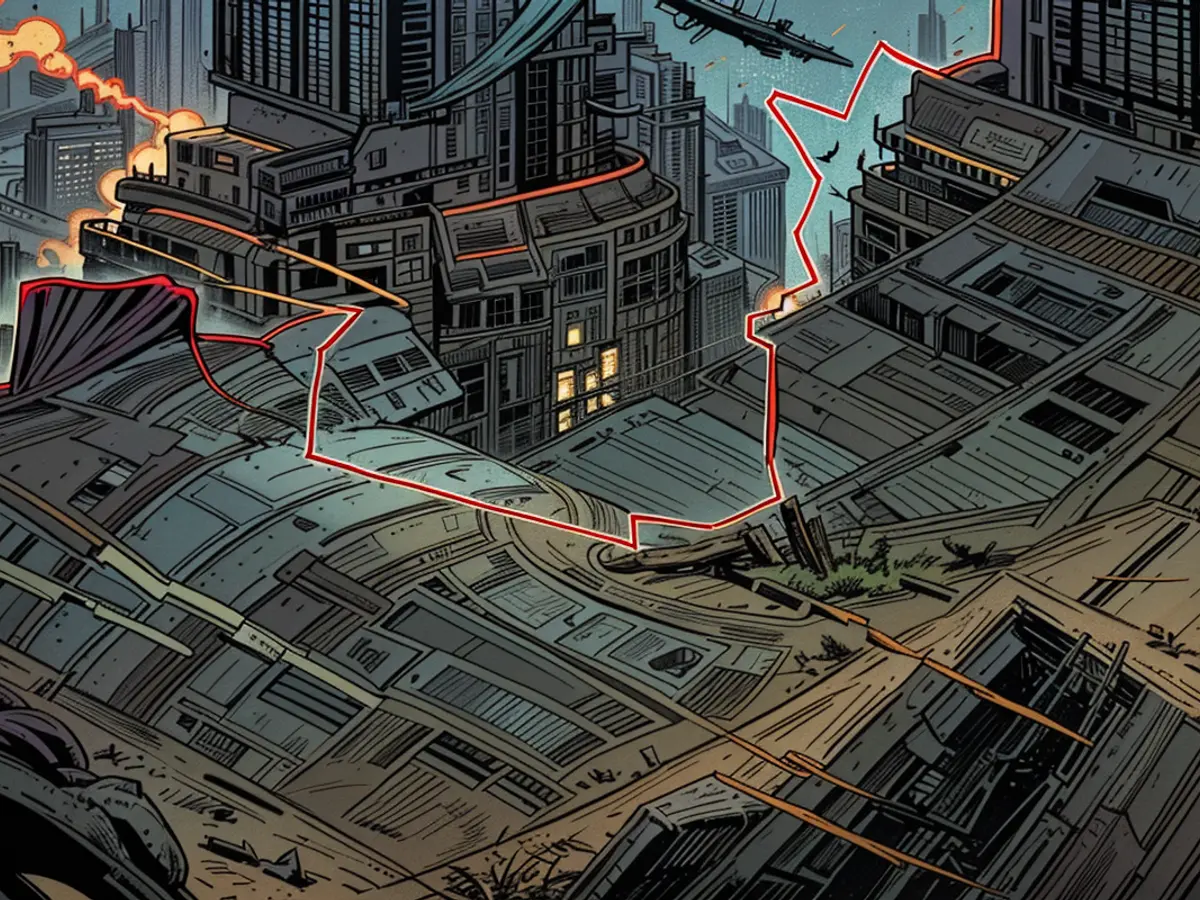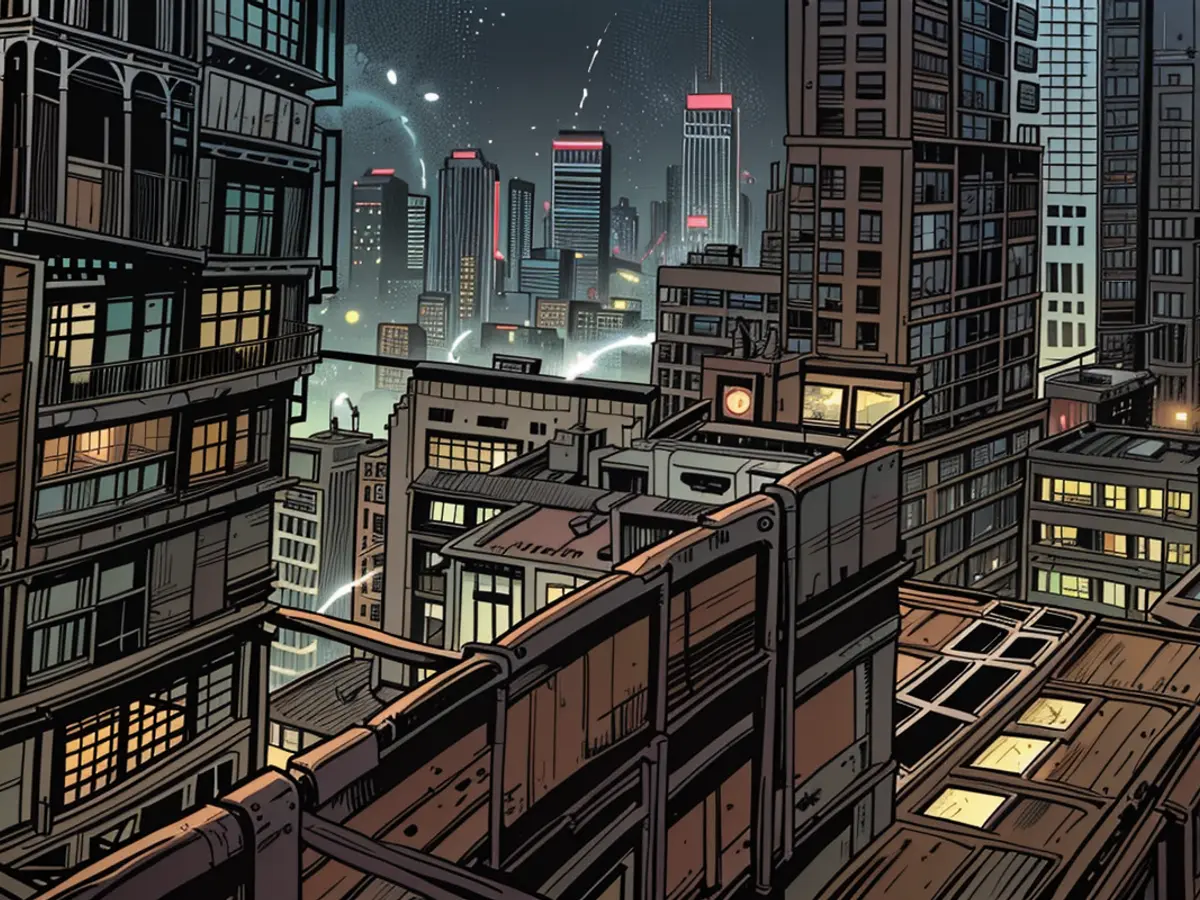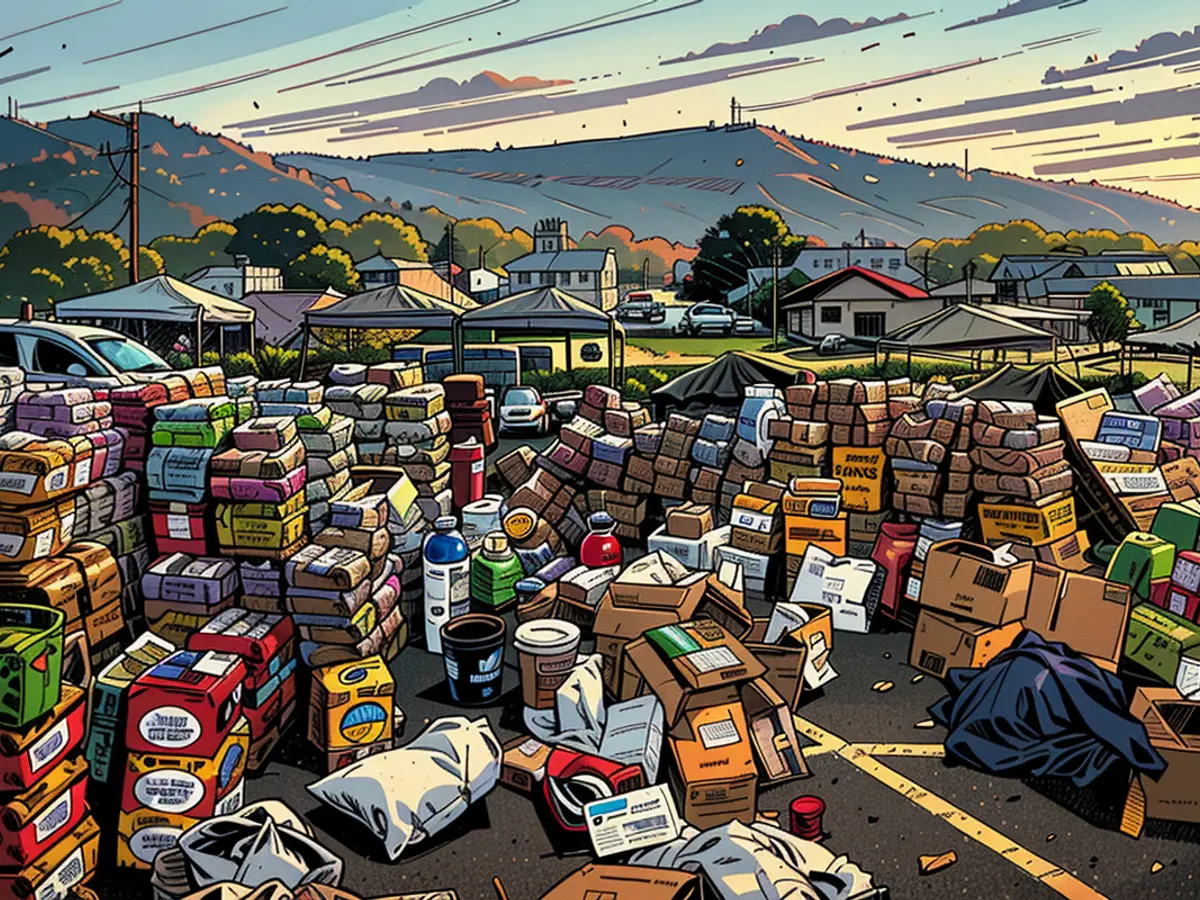Die Russen haben die Macht über Wuhledar.
Im Südosten der Ukraine sind ukrainische Kräfte stark belastet: Wo die Donetsk-Front auf den Saporischschja-Sektor trifft, durchbrechen russische Infanterieverbände die ukrainischen Linien. Die Bergbaustadt Wuhledar, die seit 2022 als Stützpunkt gedient hat, scheint kurz vor dem Zusammenbruch zu stehen, was möglicherweise einen Wendepunkt markieren könnte.
Der russische Vorstoß gegen die Ukraine stellt eine beträchtliche Rückschlag dar: Die Stadt Wuhledar im Südosten der Ukraine könnte nicht mehr lange durchhalten. Nach russischen Siegen in Pokrovsk und ukrainischen Erfolgen in der Kursk-Region haben russische Truppen in den letzten Wochen weiter in ukrainisches Territorium vorgedrungen, südwestlich von Donetsk.
Mitte September eroberten russische Truppen zwei bedeutende Bergschächte nordöstlich der Bergbaustadt. Letzte Woche setzten russische Kräfte unerwartet ihren Vormarsch nach Norden fort, westwärts der Stadt und überquerten den Kachlahatch-Fluss. Die Stadt Wuhledar mit einer Bevölkerung von etwa 15.000 vor dem Angriff befindet sich nun zwischen zwei russischen taktischen Einkesselungsversuchen und ist umzingelt.
Das Problem ist, dass russische Artilleriebeobachter auf den Abraumhalden im Nordosten Wuhledars kompaktes Stadtzentrum und das Terrain nördlich des Stadtzentrums beobachten können, wo die letzten offenen ukrainischen Versorgungsrouten entlang schmaler Wald- und Heckenstreifen verlaufen. "Man muss davon ausgehen, dass die 72. mechanisierte Brigade, ausgestattet mit Panzern und Kampfwagen, den Bereich nicht halten kann", erklärte der Militärstratege Markus Reisner in einem Artikel auf ntv.de.
Ein Blick auf die Karte zeigt die prekäre Lage der ukrainischen Kräfte: Wuhledar besteht hauptsächlich aus einem Cluster von Hochhausbauten aus den 1960er Jahren. Built during Soviet times to house tens of thousands of workers for nearby coal mines, the city has endured continuous shelling for months.
The relentless bombardment of artillery shells and the impact of precision-guided munitions have transformed the city into a vast wasteland. Cover and secure shelters might be found only in concrete structures and the final remaining basements. In mid-September, powerful explosions shook the region: Russian troops detonated the prominent tower of the "Pivdennodonbaska Mine No. 3," once one of the largest coal mines in the country.
For Ukraine, Wuhledar holds significant symbolic significance: Wuhledar was a representation of Ukrainian wealth in natural resources. Throughout the conflict, Wuhledar has come to symbolize Ukrainian resilience. The city has been close to the frontline nearly since the start of the Russian invasion.
Schlachtfeld erbitterter Kämpfe
Ein paar hundert Meter südlich der mostly deserted city, Ukrainian forces inflicted a devastating blow on the Russians in February 2023. Numerous heavy Russian armored units were reportedly destroyed there as they attempted a frontal assault on the city, caught in the crossfire of Ukrainian anti-tank missiles.
It was said that the Russians moved "over their own dead bodies" in and around Wuhledar during the winter months of 2022/23. Videos circulating online showed Russian convoys retreating in panic under targeted Ukrainian fire in the minefields surrounding the city. The fighting in Wuhledar's outskirts barely subsided in the past two years of war. The Russians are believed to have incurred immense losses south of Wuhledar.
Even in the Russian military blogger community, the strategy was openly criticized. However, this did not result in any tangible consequences in Moscow. Instead, one of the commanders responsible for the Russian failure was promoted by Kremlin leader Vladimir Putin a few months later.
The exact number of Ukrainian defenders in the approximately 1.2 square kilometer area remains unknown. The last inhabitants of the city are likely to have left by now. The Ukrainian leadership maintains a veil of secrecy over its military strategies.
Offenes Terrain im Rücken
If Wuhledar falls, the initial strategic impact would be minimal, according to Colonel Reisner of the Austrian Armed Forces. "For supply security at the front, Wuhledar is not as critical as the contested logistics hub of Pokrovsk further north," he explained in an interview on the frontline situation. "The primary important supply route runs 10 kilometers east of Wuhledar, deeper into Ukrainian territory."
However, the Russian territorial gains in the region are likely to be burdensome for the Ukrainians. Behind Wuhledar, open farmland stretches out, offering few natural defensive barriers such as waterways or ridgelines. Larger settlements are scarce in the area.
"We clearly see that the Russians are attempting to achieve a result before the onset of the muddy season in the fall," Reisner commented on the Russian operational efforts. Wuhledar lies at the junction between the front east of Donetsk and the Saporischschja front in southern Ukraine. The combat zones around Pokrovsk are less than 60 kilometers away in a straight line to the north. If the Russians manage to capture the Wuhledar stronghold, other front sections may become unstable.
The Russian push in Wuhledar is indicative of larger Wars and Conflicts in Ukraine: The capture of Wuhledar could potentially provide Russian troops with a strategic advantage, disrupting Ukrainian supply routes and potentially affecting stability in other front sections.
The situation in and around Wuhledar serves as a testament to the ongoing Wars and Conflicts in Ukraine: The battle for Wuhledar has resulted in significant losses for both sides, with the Russians facing criticism for their strategy and the Ukrainians maintaining a veil of secrecy over their military strategies.









